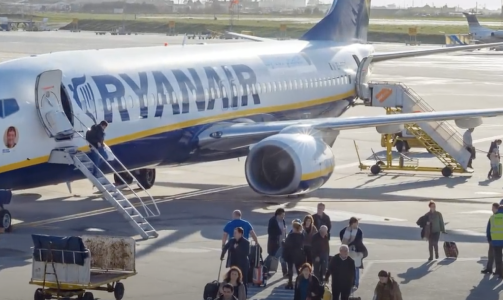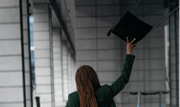Have you ever wondered why planes always board from the same side? Here’s what most people don’t know
- Replies 0
If you’ve ever found yourself shuffling down a jet bridge, clutching your boarding pass and wondering why—no matter where you are in the world—you always seem to board the plane from the left side, you’re not alone.
It’s one of those travel quirks that most of us accept without a second thought, like tiny pretzel bags or the mysterious disappearance of luggage socks.
But as it turns out, there’s a fascinating story behind this universal boarding ritual, and it stretches back much further than the golden age of air travel.
A Tradition Anchored in the High Seas
To understand why we always board from the left, we have to set our sights on the open ocean.
That’s right—before the Wright brothers ever took flight, sailors were already setting the standard. In maritime tradition, ships have a “port” (left) and “starboard” (right) side.
When docking, ships would typically tie up with the port side against the dock, making it easier for passengers and cargo to come and go.
When aviation took off in the early 20th century, it borrowed heavily from nautical lingo and customs.

Terms like “cockpit,” “cabin,” “rudder,” and “bulkhead” all have their roots in sailing.
So, when it came time to decide which side of the plane should face the terminal, the answer was simple: follow the sailors’ lead and use the port (left) side.
Why Not the Right? A Brief Experiment in Boarding
You might be surprised to learn that this wasn’t always a hard-and-fast rule. In the 1930s, United Airlines decided to shake things up by boarding passengers from the right side of their planes.
The experiment didn’t last long. As air travel boomed and airports became more complex, it quickly became clear that sticking to the left was far more efficient.
Also read: “Aisle lice”: The new air travel annoyance everyone's talking about!
Why? For one, the pilot’s seat is on the left side of the cockpit. This gives pilots a better view of the terminal and jet bridge as they taxi into the gate, making parking the plane a little less nerve-wracking.
Plus, with everyone boarding and disembarking from the same side, ground crews can load luggage, fuel, and catering supplies from the right side without tripping over a parade of passengers.
Modern Airports: Efficiency in Action
Today, this left-side boarding tradition is more than just a nod to history—it’s a finely tuned system that keeps airports running smoothly.
Jetways (those enclosed walkways that connect the terminal to the plane) are designed to attach to the left side, and airport layouts are built around this standard.
Also read: Mid-air mayhem: Passengers become unexpected heroes after the ceiling collapses on a flight
It means that while you’re finding your seat and stowing your carry-on, ground staff can work their magic on the right side, prepping the plane for its next journey.
This division of labor isn’t just about convenience; it’s about safety, too. By keeping passengers and ground operations separate, airlines reduce the risk of accidents and delays. It’s a small detail that makes a big difference in the fast-paced world of modern air travel.
Source: BRIGHT SIDE / Youtube.
Aviation Oddities: When Things Go Sideways
Of course, not every flight goes according to plan. Just recently, a China Eastern Airlines passenger made headlines for opening an emergency exit—while the plane was still taxiing—because he wanted “a breath of fresh air.” (Pro tip: always wait for the seatbelt sign to turn off before seeking ventilation!)
While no one was hurt, the incident caused chaos and delayed everyone’s exit by 20 minutes, proving that even the best-laid boarding plans can be upended by a single impulsive act.
Related stories:

Have you ever noticed this boarding quirk before? Maybe you’ve spotted an exception to the rule, or perhaps you have your own travel traditions you swear by. Drop a comment below and join the conversation with your fellow GrayVine travelers!
It’s one of those travel quirks that most of us accept without a second thought, like tiny pretzel bags or the mysterious disappearance of luggage socks.
But as it turns out, there’s a fascinating story behind this universal boarding ritual, and it stretches back much further than the golden age of air travel.
A Tradition Anchored in the High Seas
To understand why we always board from the left, we have to set our sights on the open ocean.
That’s right—before the Wright brothers ever took flight, sailors were already setting the standard. In maritime tradition, ships have a “port” (left) and “starboard” (right) side.
When docking, ships would typically tie up with the port side against the dock, making it easier for passengers and cargo to come and go.
When aviation took off in the early 20th century, it borrowed heavily from nautical lingo and customs.

Passengers around the world typically board and disembark planes from the left-hand side, a tradition that originates from maritime practices where the port side was conventionally used for boarding. Image source: BRIGHT SIDE / Youtube.
Terms like “cockpit,” “cabin,” “rudder,” and “bulkhead” all have their roots in sailing.
So, when it came time to decide which side of the plane should face the terminal, the answer was simple: follow the sailors’ lead and use the port (left) side.
Why Not the Right? A Brief Experiment in Boarding
You might be surprised to learn that this wasn’t always a hard-and-fast rule. In the 1930s, United Airlines decided to shake things up by boarding passengers from the right side of their planes.
The experiment didn’t last long. As air travel boomed and airports became more complex, it quickly became clear that sticking to the left was far more efficient.
Also read: “Aisle lice”: The new air travel annoyance everyone's talking about!
Why? For one, the pilot’s seat is on the left side of the cockpit. This gives pilots a better view of the terminal and jet bridge as they taxi into the gate, making parking the plane a little less nerve-wracking.
Plus, with everyone boarding and disembarking from the same side, ground crews can load luggage, fuel, and catering supplies from the right side without tripping over a parade of passengers.
Modern Airports: Efficiency in Action
Today, this left-side boarding tradition is more than just a nod to history—it’s a finely tuned system that keeps airports running smoothly.
Jetways (those enclosed walkways that connect the terminal to the plane) are designed to attach to the left side, and airport layouts are built around this standard.
Also read: Mid-air mayhem: Passengers become unexpected heroes after the ceiling collapses on a flight
It means that while you’re finding your seat and stowing your carry-on, ground staff can work their magic on the right side, prepping the plane for its next journey.
This division of labor isn’t just about convenience; it’s about safety, too. By keeping passengers and ground operations separate, airlines reduce the risk of accidents and delays. It’s a small detail that makes a big difference in the fast-paced world of modern air travel.
Source: BRIGHT SIDE / Youtube.
Aviation Oddities: When Things Go Sideways
Of course, not every flight goes according to plan. Just recently, a China Eastern Airlines passenger made headlines for opening an emergency exit—while the plane was still taxiing—because he wanted “a breath of fresh air.” (Pro tip: always wait for the seatbelt sign to turn off before seeking ventilation!)
While no one was hurt, the incident caused chaos and delayed everyone’s exit by 20 minutes, proving that even the best-laid boarding plans can be upended by a single impulsive act.
Related stories:
- Stunned passengers watch crew wrestle first-class passenger in mid-flight meltdown
- Close call at LaGuardia raises concerns about air traffic safety—but here’s what passengers can do
- Why did a Tokyo-to-Houston flight make an emergency stop in Seattle? It wasn’t turbulence!
Key Takeaways
- Passengers around the world typically board and disembark planes from the left-hand side, a tradition that originates from maritime practices where the port side was conventionally used for boarding.
- Catering and luggage are loaded on the right side of the aircraft to keep ground operations and passenger movement separate, making the process more efficient and organized.
- Even though United Airlines experimented with right-side boarding in the 1930s, they reverted back to the left after realising the traditional method was more efficient, especially as air travel grew in popularity.
- A recent incident in China saw a passenger open an emergency exit on the runway to “get some fresh air,” causing chaos but no injuries, with police later escorting the individual off the plane for questioning.
Have you ever noticed this boarding quirk before? Maybe you’ve spotted an exception to the rule, or perhaps you have your own travel traditions you swear by. Drop a comment below and join the conversation with your fellow GrayVine travelers!






